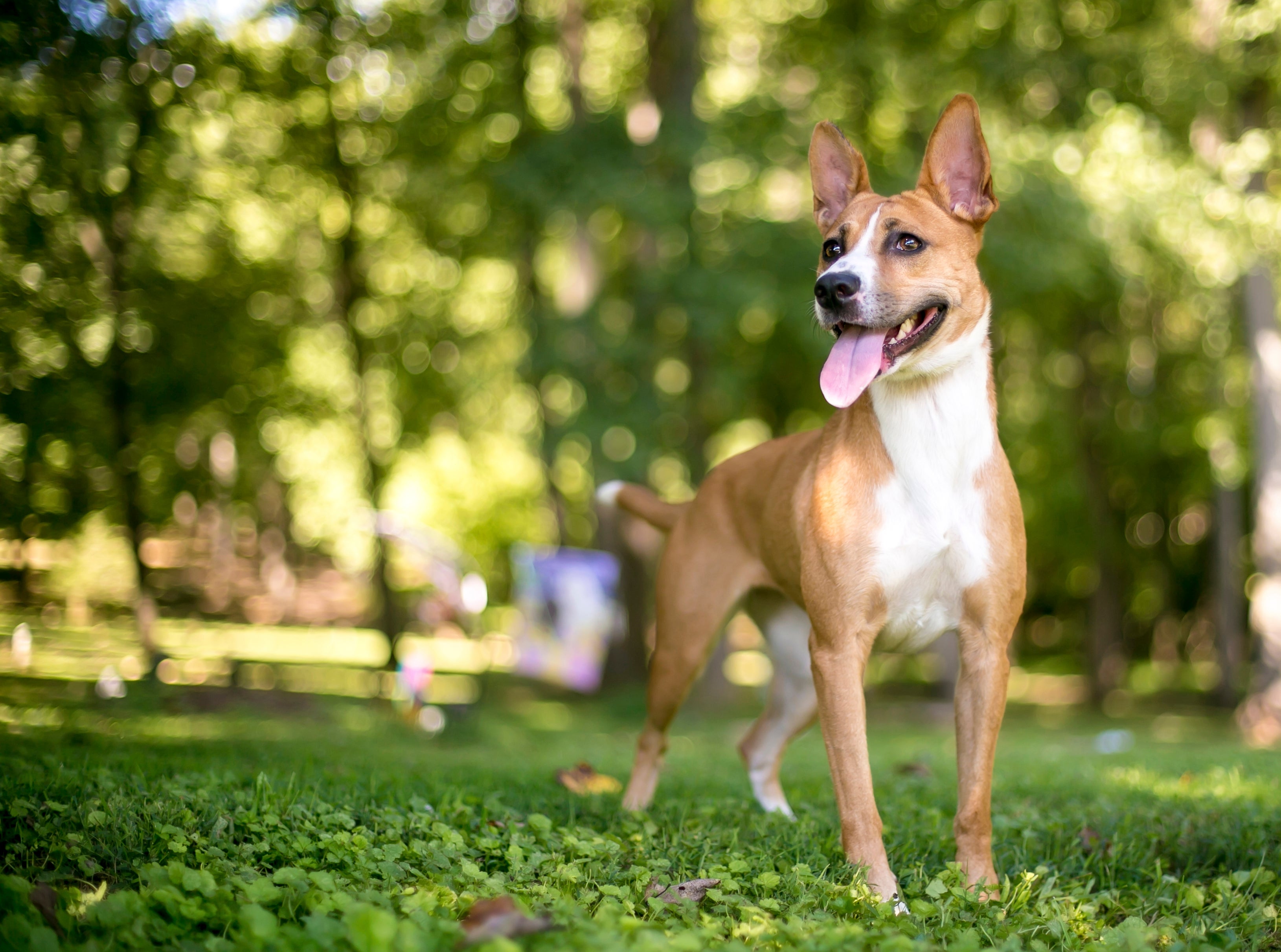Basenji
This small to medium-sized fox-like African dog sports a distinctive curly tail and wrinkled forehead with a smooth, glossy coat. They are fast, with erect ears that helped them find game in thick bush in their former life as hunters. (They might also dissipate heat.) Basenjis are smart, high-energy, and fun, and make lovely companions—if you can keep up, that is
Breed characteristics carousel
Learn More
Need to Know
- Dog suitable for owners with some experience
- Need to be aware of potential health issues
- Enjoys active daily walks
- Medium dog
- Minimum drool
- Requires grooming
- Quiet dog
- Welcomes everyone happily
- Could have issues with unknown dogs but gets along with known dogs
- May need additional training to live with other pets
- Great family dog
- Can live without a yard, including in the city
- Cannot be left alone
- AKC Registered Breed

Personality
Imagine a cat-like dog: the Basenji is a clever, stubborn, independent, and reserved breed. They love to chase and trail like a cat and regular mental and physical stimulation is a must. Instead of barking they yodel, howl, shriek, and occasionally let out a quirky-sounding "fox bark." While they get along well with other dogs, they don’t always warm to other Basenjis.
The Basenji dog breed, which means “bush thing,” is among the most primitive breeds, discovered in the African Congo with Pygmy hunters. The native tribes used the dogs as pack hunters, driving game into nets. They were first brought to America in the 1930s. Goodbye My Lady, a 1956 film, featured a Basenji which helped the dog’s popularity grow.
The ideal Basenji dog owner is active, patient, and experienced with dogs, ready to provide plenty of exercise and positive reinforcement training. They should have a secure yard, offer regular mental stimulation, and appreciate the dog’s independent nature.
Originally bred to hunt in rough terrain, the Basenji breed needs exercise daily and has plenty of stamina. Traditional dog walks are best as they have a very strong drive to chase and explore, plus an indifference when it comes to recall. Exceptional problem-solving skills mean feeding toys, enrichment games, and scent work galore will keep their minds and bodies occupied.
They don’t need much space but love a cozy home with a window view to survey their outdoor space. They require a lot of exercise, either on a leash or in an escape-proof fenced-in yard. These little Houdinis can climb fences and trees so it’s important they always be supervised while outside.
The Basenji dog practices self-grooming, giving owners reprieve from an expensive grooming bill. The coat is short, sleek, and fine, and you can help them out by wiping them down with a glove once a week to remove loose hairs. Ears and nails can be checked periodically.
Basenjis are clever and intelligent pups, though they often see traditional dog training as beneath them. With finesse, patience, and a little reverse psychology to get them to feel inspired to act, Basenjis can master nearly any task. They excel in agility and can surprise with their abilities. However, obedience, especially recall, is never a guarantee. Like a teething baby, they love to mouth and chew so it’s important to provide ample, suitable outlets for these natural instincts.
The Basenji is a specialized breed that thrives best in homes without young children or with older, responsible children.
The cost of a Basenji from a breeder is significantly more than the cost of adopting one from a local shelter or rescue. The adoption fee usually covers additional items such as spaying or neutering, vaccines, and microchipping.

Learn more about feeding and caring for your Basenji on Purina.
Did You Know?
- The Basenji is probably the world’s oldest dog breed. They got their name from the African people of the Ituri rainforests who called them Basenchi, meaning “ bush thing”.

